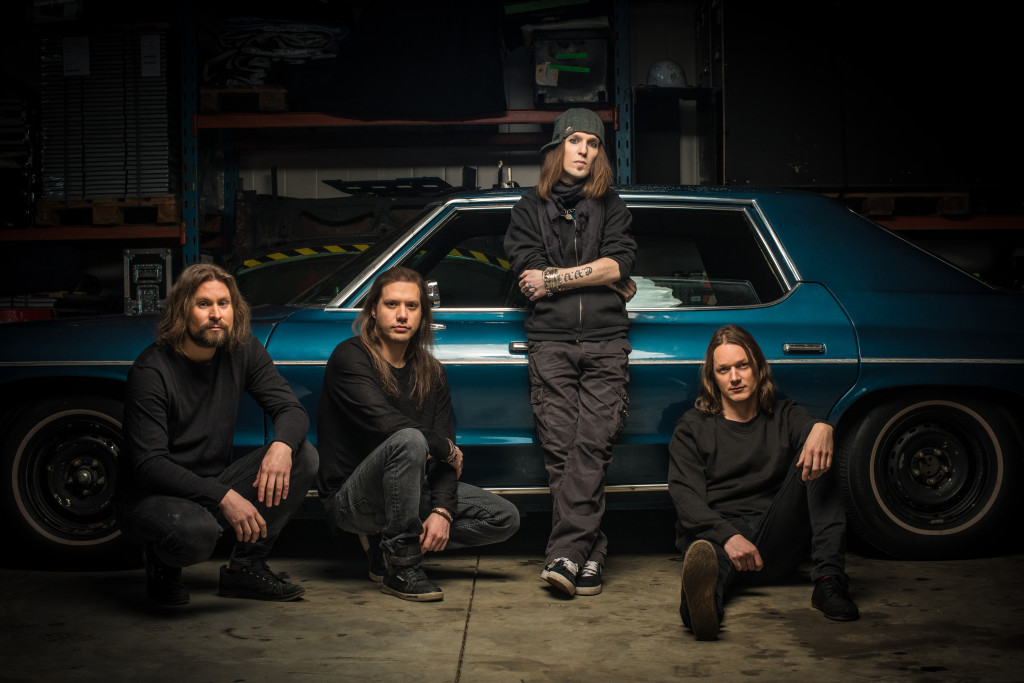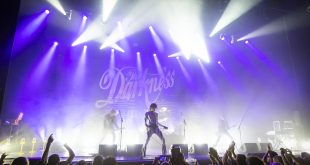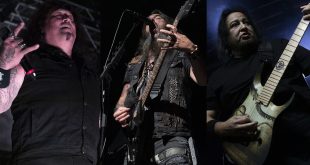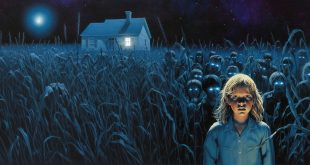Children of Bodom is one of the prototypical bands of the Finnish extreme metal collective. Formed in 1993, the band has long championed some of the distinct sounds of the region’s more extreme musical side. Despite some moderate shifts in tone over their career, as well as the loss of veteran guitarist Roope Latvala, Bodom carry on undaunted, with frontman and main songwriter Alexi Laiho taking full control of all guitar duties. The group’s latest effort, I Worship Chaos, carries with it all of the characteristics which originally made Children of Bodom the forerunners of the Finnish metal scene, including razor-sharp guitar work, ample synth textures and solos, and above all, attitude. The group has never been modest, and while their brazen character is largely a very tongue-in-cheek front, their true intent has always been clear: they are here to start a party in a circle pit, and for those seeking to join the brawl, I Worship Chaos is a VIP invitation.
The album begins with little dalliance, introducing itself instead in traditional Bodom style: a mosh-inducing melodeath riff shared both by guitars saturated in buzzsaw distortion and whimsical lead synth. “I Hurt” is a standard combination of aggression and melody, complete with Laiho’s vocal snarl and lyrical machismo. An unconditional thrasher, the first song establishes the overarching feeling which nearly monopolizes the album. Indeed, the majority of the following tracks directly follow suit, so prospective listeners should be prepared for a relentless aural assault, though longtime fans of the band have no doubt been happily geared for battle for the last two years. The “Hate Crew”, as they have been named, will be pleased to know that the latest entry in the Bodom saga does not disappoint those seeking to headbang their spines out.
Expectedly, I Worship Chaos is not a record which takes many risks, but instead attempts to capitalize on the band’s strengths, which largely lie in Laiho’s highly capable hands. Here, the “Wildchild” is able to further cement himself in the pantheon of extreme metal’s guitar gods. Few tracks on this record pass without a blistering guitar solo which sees Laiho scurrying up and down the fretboard with deft accuracy, doubtlessly earning his alias. Laiho is arguably more impressive, however, during the verses and choruses of each song as he demonstrates his aptitude for supremely gratifying riff crafting. This talent is most evident in the album’s first single, “Morrigan”. While more moderate in both tempo and attitude, the track wonderfully marries both classic and extreme sides of the metal genre, channeling the likes of Eddie Van Halen and Jon Nödtveidt (Dissection) to produce a ripping and melodic main guitar lick which will undoubtedly instill itself as one of Laiho’s finest.
It is this approach to songwriting which touches on both extremes of the metal sphere that always proves to be the strongest aspect of Children of Bodom’s music, though a good amount of listeners would argue that the most distinguishing feature of the band’s sound is the whimsical and eccentric synth sounds which underline key phrases in each song. Longtime keyboardist Janne Wirman continues to leave his unmistakable mark on I Worship Chaos through accentuating melodies and harmonies, mingling pads, and of course, the trademark Bodom orchestral stab, which makes its appearance very sparsely on this album, but is as delightful as always when it does. As is expected, Wirman’s work as a skillful soloist is showcased in full effect during the bridge of most of the album’s songs, during which he stands toe-to-toe with Laiho’s instrumental dexterity. But as prominent a flavor as it is, the synth is rarely the main attraction of any piece. Instead, Laiho’s unrelenting thrash assault is allowed to constantly bombard the listener, throwing riff after riff at the audience until everyone is bruised but satisfied.
It is curious, then, that the strongest points of the album come not from when the band sticks to that which is comfortable, rather, the most attention-grabbing moments occur when the mood deviates from the thrash-fest, even if slightly. The previously discussed “Morrigan” is still packed with delicious riffage, but its aggression is more downplayed and focus is instead placed on melody and punchy, forward cadence. “Prayer for the Afflicted” comes as close as Children of Bodom will likely ever come to the doomy plod of Black Sabbath, with a rich chorus on top of which a massive lead guitar phrase is laid, spelling one of the most memorable melodies of the album. “All for Nothing” is the only song on which Laiho gives the throat-shredding howls a rest, albeit briefly, instead opting to ominously whisper the lyrics. This occurs at the outset of the song over a very pleasing blend of clean guitar strumming and delicate piano, an extremely welcome rarity for Wirman’s keyboard, which generally serves instead as a cheese delivery system lifted directly out of the mid-80’s. Moshers need not sheathe their weapons for a moment, though, as such detours from the violent path are few and far between, with the majority of the album content with recklessly showering fuel all over your fire from the industrial pump that is Laiho’s wicked mind.
The most common gripe that most listeners will share about I Worship Chaos is in regards to its singularity in tone. Children of Bodom has only one gear, and though the album does offer some minor variations which prove successful, as outlined above, the tone of the album barely ever shifts from the violent thrash party that fans are used to. The cranked guitar sound exceedingly dominates the record, and Laiho’s mid-ranged bark is ever-present, even when the music attempts to cultivate a more personal mood. By the fifth or sixth round of testosterone-fueled brutality, the album does begin to wear on the listener, and many songs are setting themselves up to be forgotten amongst Bodom’s vast catalog of mosh pit anthems. Undoubtedly, listeners would be perfectly satisfied with more of the same recipe for success if not for the fact that the album’s strongest moments occur during songs which incorporate some inspired experimentation.
While it is understandable that the band may be hesitant to invest in change after experiencing some backlash over prior departures from the norm, Children of Bodom can still find greater success in the future through variation, as long as it comes from a place of sincerity and creativity, rather than one of apathy or necessity. On the other hand, Laiho and friends can also rest easy knowing that there is still plenty of value in their tried-and-true methodology of keeping it simple and shameless. It would just be unfortunate to see such obvious talent stagnate. Though one would likely not expect artistic revival from such a long-standing band, especially one whose mascot is Death itself, Children of Bodom have indeed shown signs of promise, and have instilled a notion that with experience, ingenuity, and some good old-fashioned grit, they may be capable of breathing new life into the style they helped create. They need only take the chance.
Visit Children of Bodom and order the album here.
 Music Existence Because of Music, We Exist
Music Existence Because of Music, We Exist




